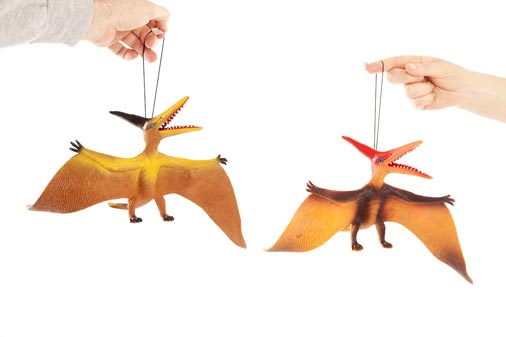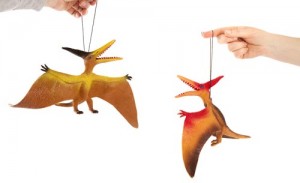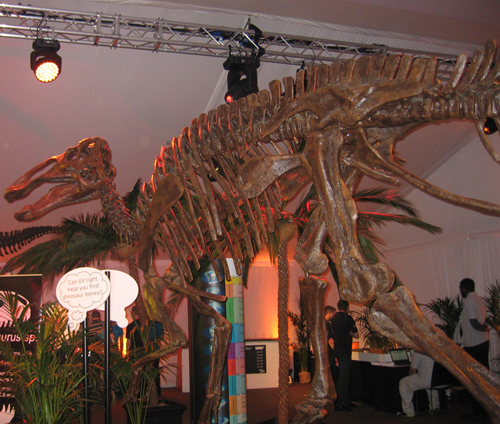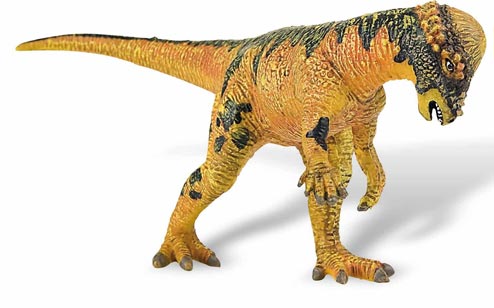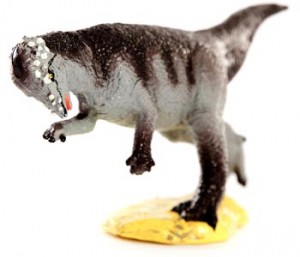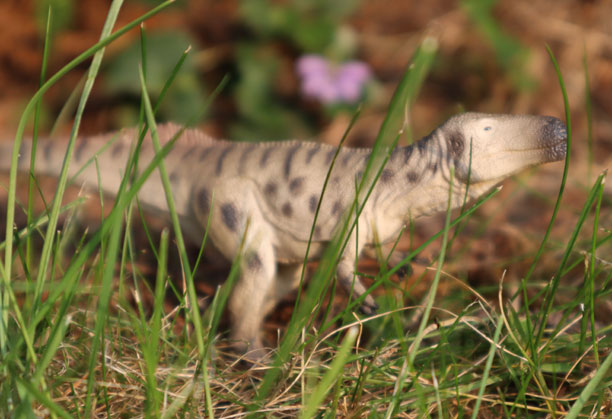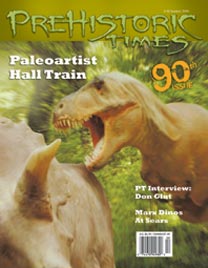Review of the Safari Wild Dinos Tapejara Model
Review of the Safari Wild Dinos Tapejara Model
It is always a privilege to get our hands on a new pterosaur model, especially one that is not yet another replica of Pteranodon longiceps. Pteranodon is perhaps, one of the most famous of all the pterosaurs (flying reptiles) and it was a spectacular animal but nonetheless, the new model of Tapejara from Safari is a welcome addition to the range of pterosaur models that are available.
Safari Wild Dinos Tapejara
Tapejara was a bizarre crested pterosaur, fossils of which are associated with the Santana Formation of Brazil. This animal had an incredible head crest, which was up to 1 metre tall in some specimens. Scientists believe the huge head crest was a feature of males and may have been used in elaborate courtship displays. The crest would have produced considerable drag and made Tapejara vulnerable to crosswinds. Large crested males would have been slow flyers and relatively unstable.
This may be an example of an aspect of natural selection. Those males strong enough to cope with such a disadvantage may have been the ones that females were attracted to. This is similar to the peacock’s tail, the larger and more unwieldy the tail, the greater the number of highly visible eye spots the more peahens seem to appreciate the owner!
Darwin wanted to conduct an experiment on peahens and peacocks to assess the effect of a clipped tail on the chances of a peacock attracting a mate. As far as we can recall he never got the chance to carry out this experiment.
Tapejara Fossils
Tapejara fossils are associated with sediments that date from the Aptian and Albian faunal stages of the Cretaceous. It is thought that this particular pterosaur lived on the coast of the newly formed Atlantic ocean. The downturned and toothless beak seems particularly suited to snatching slippery fish from the surface of the sea.
The new Tapejara model from Safari Ltd has a bright head crest, the modellers have attempted to follow the latest scientific thinking and have tried to depict a male of this species. The body is sculpted in such a way so as to indicate the presence of a furry body, many scientists believe that these active creatures were warm-blooded and so would have had insulating fur. The model is hand-painted and shows fine detail and Tapejara is depicted in a flying and gliding position.
New Model of Tapejara from Safari
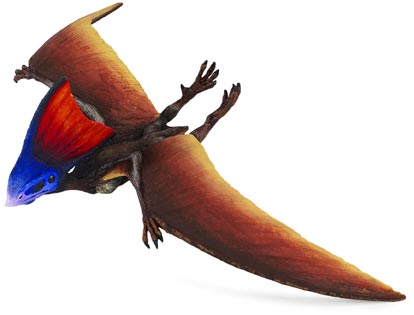
Picture credit: Everything Dinosaur
To view the Tapejara model from Safari Ltd and the other exciting prehistoric animals (including pterosaurs) in this model range: Safari Ltd. Wild Safari Prehistoric World.
Model Measurements
With a wingspan of 23 cm and a body length of 9 cm, the model works well with 1:72 scale figures (Tapejara wingspan estimated to be 5 metres approximately). The Safari Ltd model does recreate the bizarre crest and the purple colouration around the rostrum works well with the blueish hue around the eyes. The nostrils are accurately depicted, as is the large opening in the skull between the eyes and the nostrils (preorbital fenestra), which covers over half the length of the skull when viewed from the side.
In in all, this model is a welcome addition to the Wild Dinos range from Safari, although with some confusion over the actual taxonomic relationship between the various members of the Tapejara genus, the exact species is difficult to determine. It may be a representation of T. imperator, but whatever the actual species, it is great to see a new model of a flying reptile being introduced.



